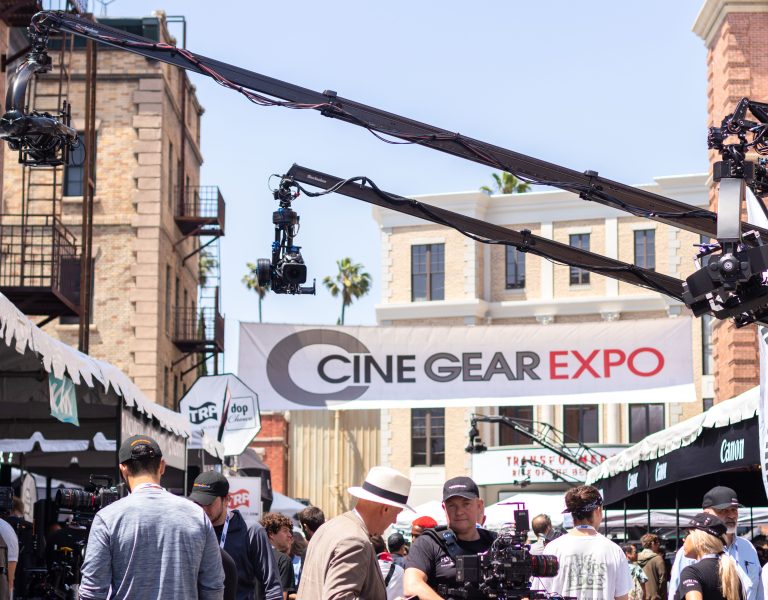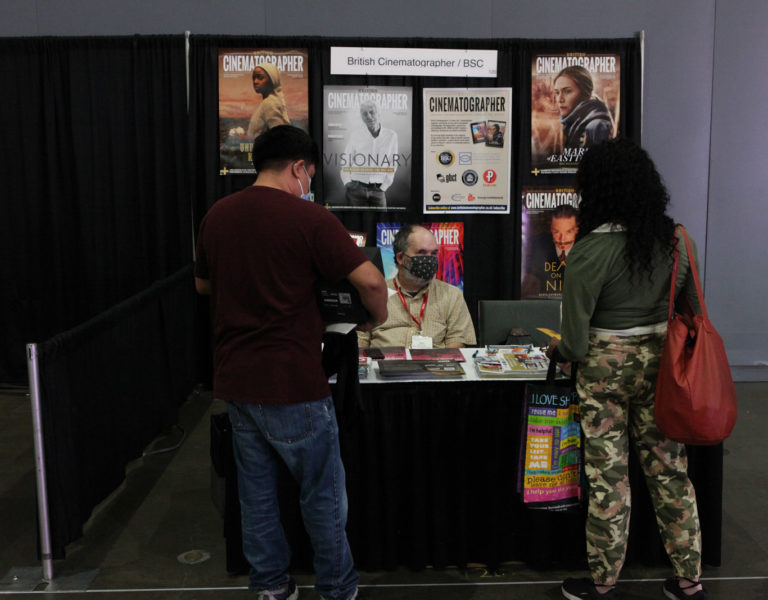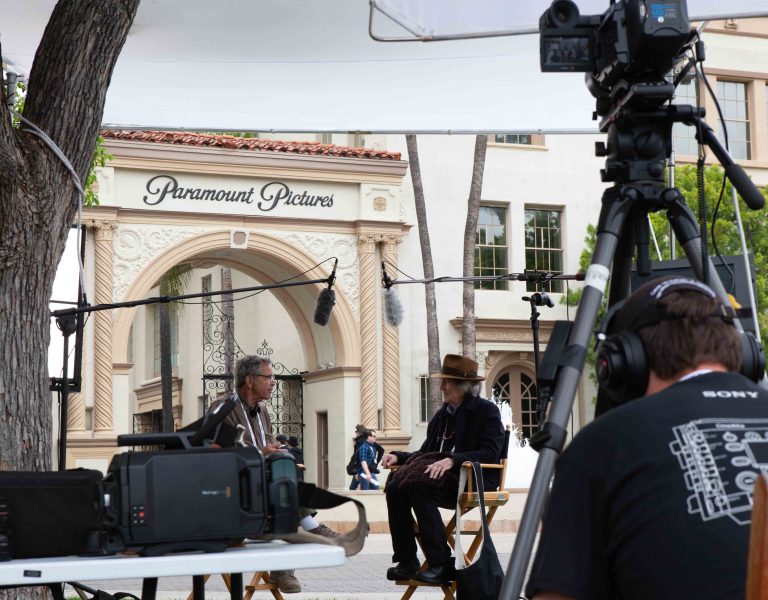ART AND HONOURS
Whether it was the move to its new venue at Warner Bros. or the post-strike, post-pandemic eagerness to gather, network, and prognosticate, Cine Gear felt busier than ever.
The Cine Gear experience started a couple of days ahead of the show and continued through the event with various industry activities. Discussions often centered around the slow return to work and the ongoing “unemployment” in LA’s entertainment sector.
Our first stop, early in the week, was for tacos and beverages, sponsored by Kino Flo at their facility, on a warm evening under a regional heat dome, that brought additional issues into the conversation, such as what happens to outdoor location work on a steadily heating planet, especially in already warm places such as LA, New Mexico, Georgia, etc? This same handful of post-production observers wondered if the ongoing job contraction could indicate the film biz was “reverting to mean” – i.e., smaller and harder to get into, the way it was before all that investor-fuelled streaming expansion made it seem like movies and TV had become a “forever industry” that would keep defying physics, and always keep expanding.
Another pre-show event included a demonstration by Panasonic – in a Warner screening room – of their Lumix GH7, a “prosumer” camera, coming on the heels of Canon’s lunchtime introduction of its new full-frame EOS C400 cinema camera, with a native RF-mount, in its own local showroom.
In its current incarnation, the reworked Lumix is now ARRI LogC3-enabled. This means that color matching with ARRI’s digital cinema cameras, priced tens of thousands of dollars more than the modest four-figure price of the GH7, can now be achieved.
It’s been ARRI certified, and comes with access to a “look library,” and LUT generating tools, to boot.
ARRI president and CEO Glenn Kennel was there to note that “a broader market will [now] have access to the ARRI look.”
The key there may be “broader market,” as many of the booth demos spoke of how their camera / lens / editing software / telescoping crane, would also be useful for “content creators” on YouTube, TikTok, and elsewhere. Which might indicate a search for greener pastures – or at least expanding markets – beyond traditional studio walls.
As for programming during the show, there was a veritable smorgasbord of panels, talks and classes. Among them, a RED panel with Jeff Cronenweth ASC; Erik Messerschmidt ASC, and Wally Pfister ASC BSC DGA – moderated by RED senior director of global strategic relations, Naida Albright, on Unleashing Creativity. Given the trio’s roots in, and frequent return to (sometimes as director) short form projects, one question was about how much gear was intrinsically necessary to scale the heights of the cinematographer’s art. Having too much of it around, Pfister opined, “just makes you slower”.
Messerschmidt laid a lot of it on scheduling failures – i.e., directors wanting shots to look like dawn, for example, that aren’t captured until midday. Cronenweth praised the “small form factor” of digital cameras – which, Messerschimdt added, were “all really good” now. Which might mean achieving a specific look could come down to other tangibles, like lights and glass.
In a seminar with Markus Förderer ASC, along with the storied Ed Lachman ASC and Polly Morgan ASC BSC thy explored how to use the Cineflares database Förderer founded – where you can search out characteristics on nearly a century’s worth of glass, including how it flares – back-catalogue names like Bausch & Lomb’s Baltar lenses came up in conversation a lot. Lachman provided a practical approach, saying he tries “to shoot the glass that would’ve been used in that time period,” while Morgan advised in a production where flares might be added in post, you should at a minimum, try to “shoot the flare plates” yourself.
The ICG 600’s panel on The Art & Science of Camera Motion comprised of DPs and operators and was moderated by the guild’s assistant western regional director, Michael Chambliss, who wrote later to note – postproduction lens flares notwithstanding – that “the options for how we can move the camera have exploded over the last several years, but the ‘when’ and ‘why’ remain at the core of the cinematographer’s art.”
Many of those “whens,” and “hows,” were honoured in the award ceremonies. Cine Gear presented Sir Roger Deakins CBE ASC BSC with the Legacy Lifetime Achievement Award and honoured the ASC’s long-serving Patty Armacost, for the Heart of the Community Award, named after the show’s late co-founder, Karl Kresser. Team Deakins – as in Sir Roger and James Deakins – were honoured as Industry Innovators for their podcast; and Rodrigo Prieto ASC AMC received the Visionary Award, after his impressive doubleheader of Barbie and Killers of the Flower Moon, last year (and as he moves over to the director’s chair).
Women in Media’s ICON + Altitude Awards honoured emerging DPs, operators and gaffers, with the icon being PR and communications maven Susan Lewis. She told us that since meeting WiM founder Tema Staig “three years ago, I have been overwhelmed by her consistent dedication to equalising gender roles [behind the scenes]. I have been doing what I can to connect and promote more diverse players on set via the technology, but it’s a long game. Hopefully when these strange days conclude we will see progress once again”.
Which echoed something DP Abraham Martinez told us in the wake of the ICG panel, where the younger speakers had all worked with the more senior ones at some point during their careers. He spoke of the camera department being “a long-range game and you don’t know where you’ll be in the future. I’m truly grateful to have the support of everyone, my team, and tap into a community that is real.”
Reflecting on the community spirit at this year’s Cine Gear and the event’s new home, Juliane Grosso, CEO Cine Gear Expo, said “attendees and exhibitors alike were excited to get another Hollywood studio experience, and Warner Bros. pulled out all the stops to show off their beautiful backlot and stages. Where else could folks check out the latest camera gear and walk around actual Batmobiles and other authentic motion picture treasures”?










